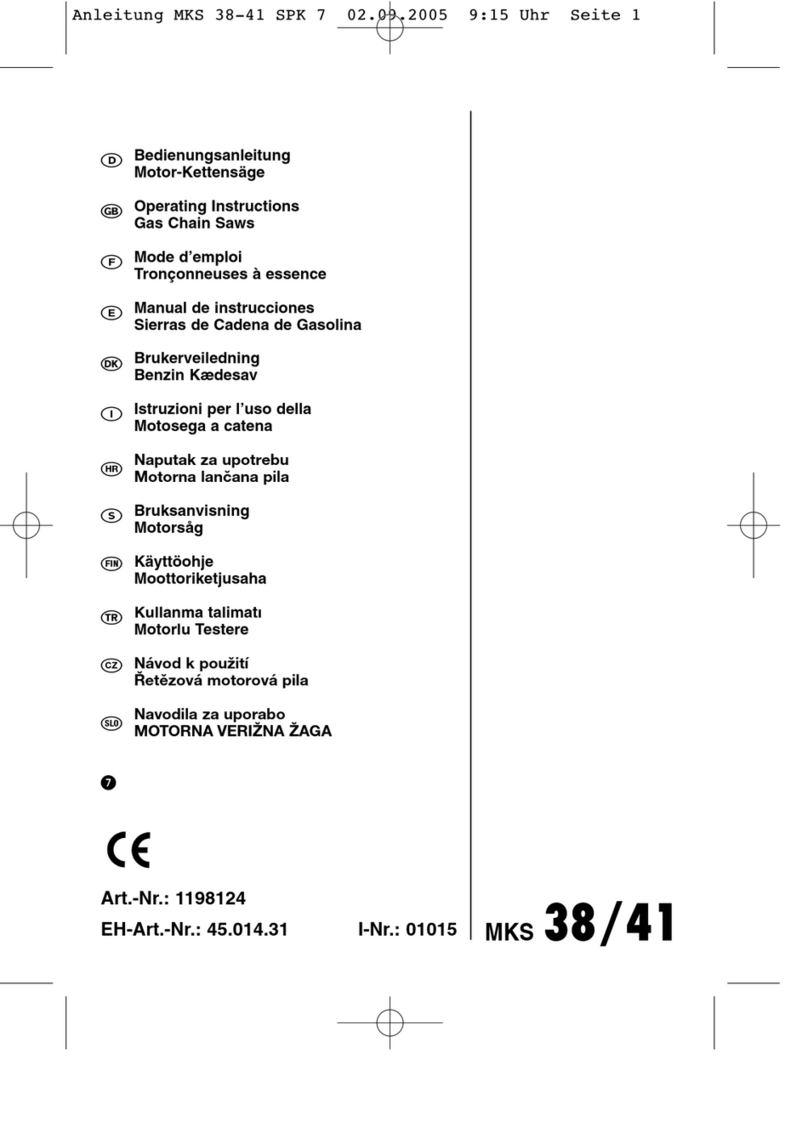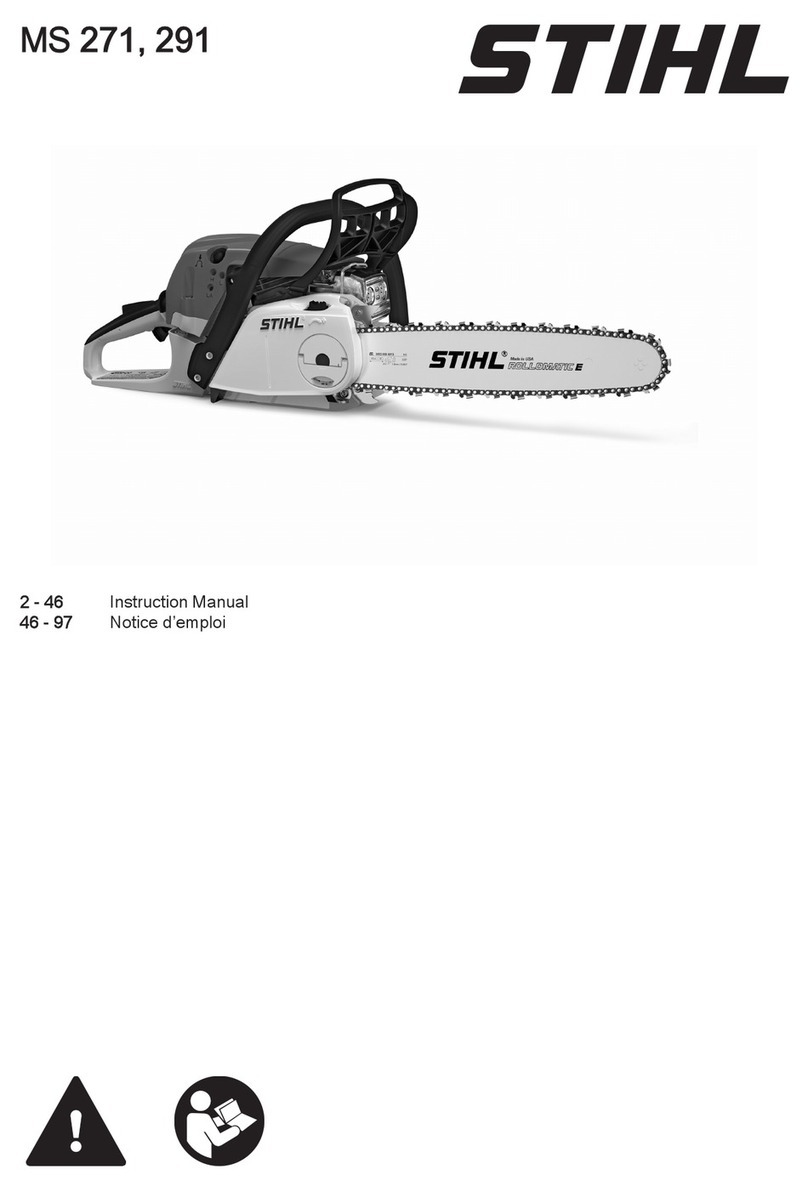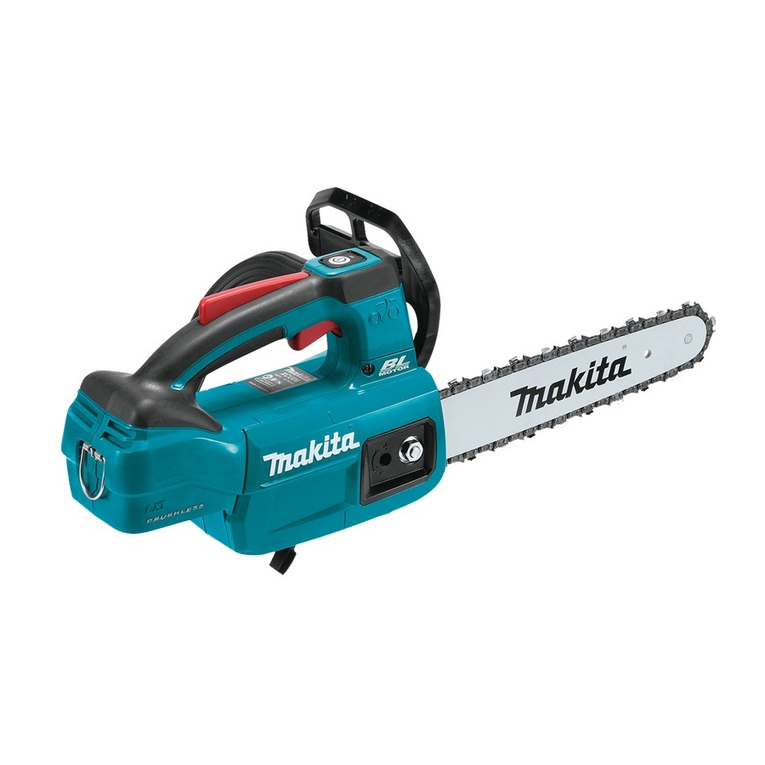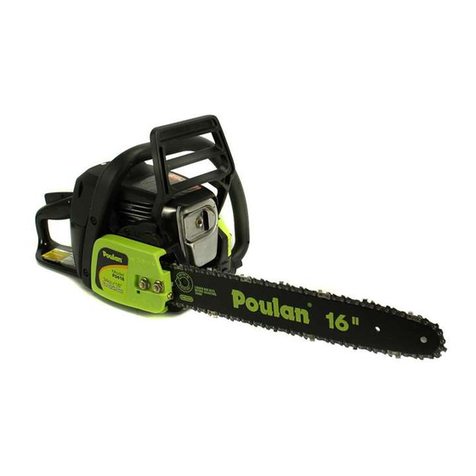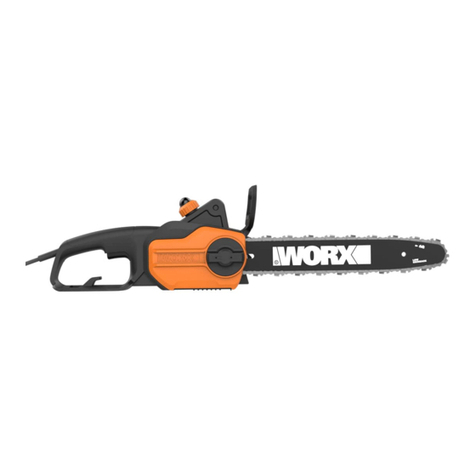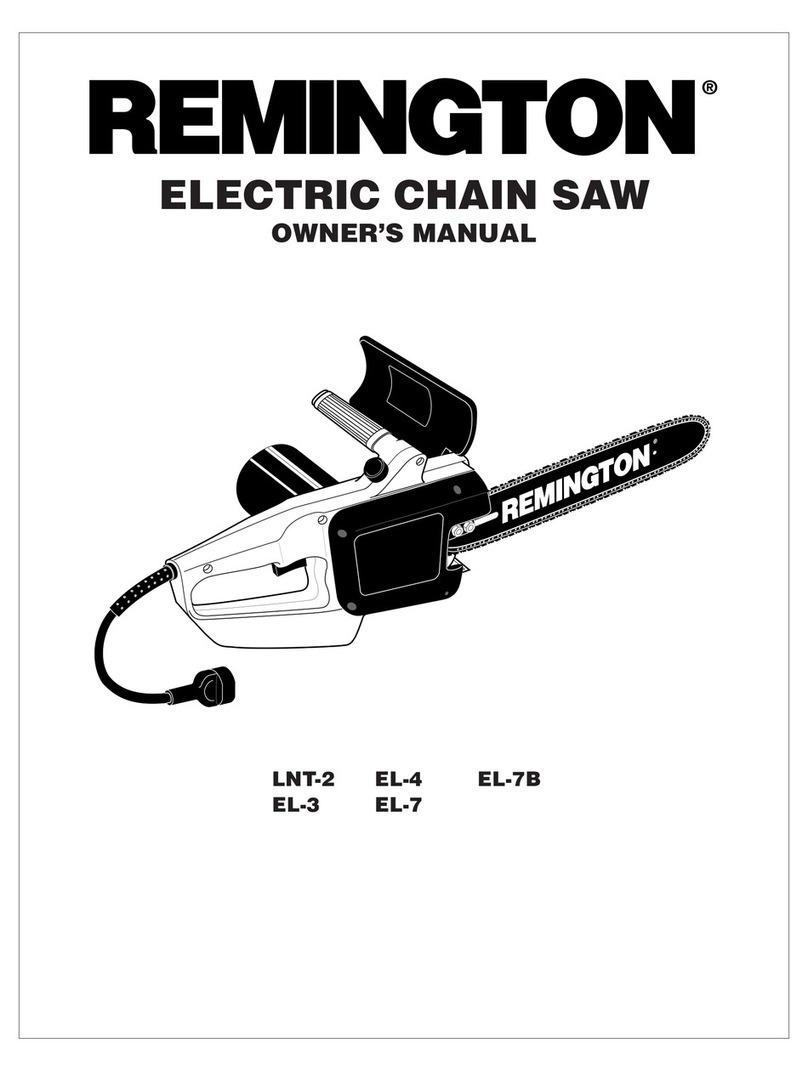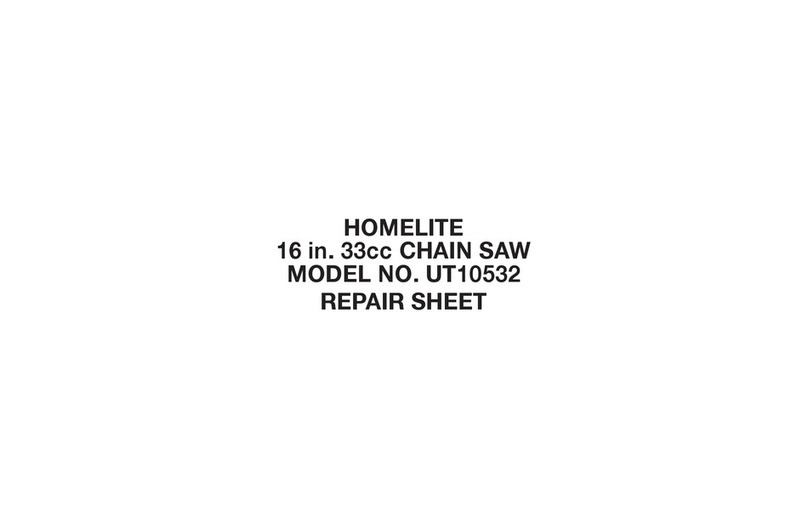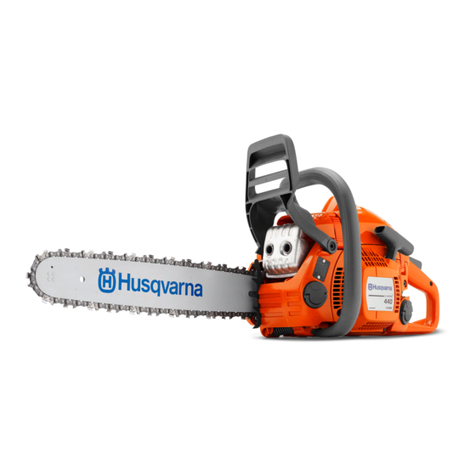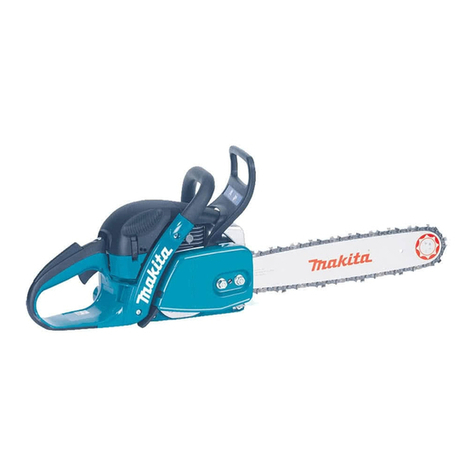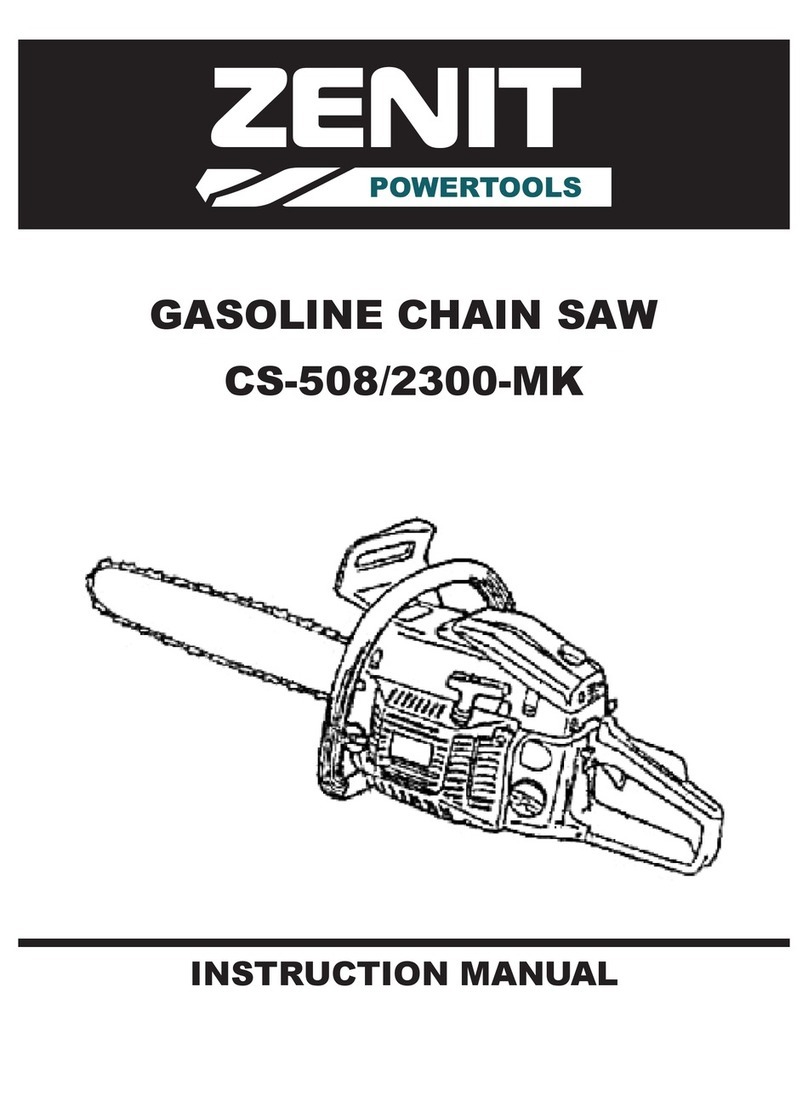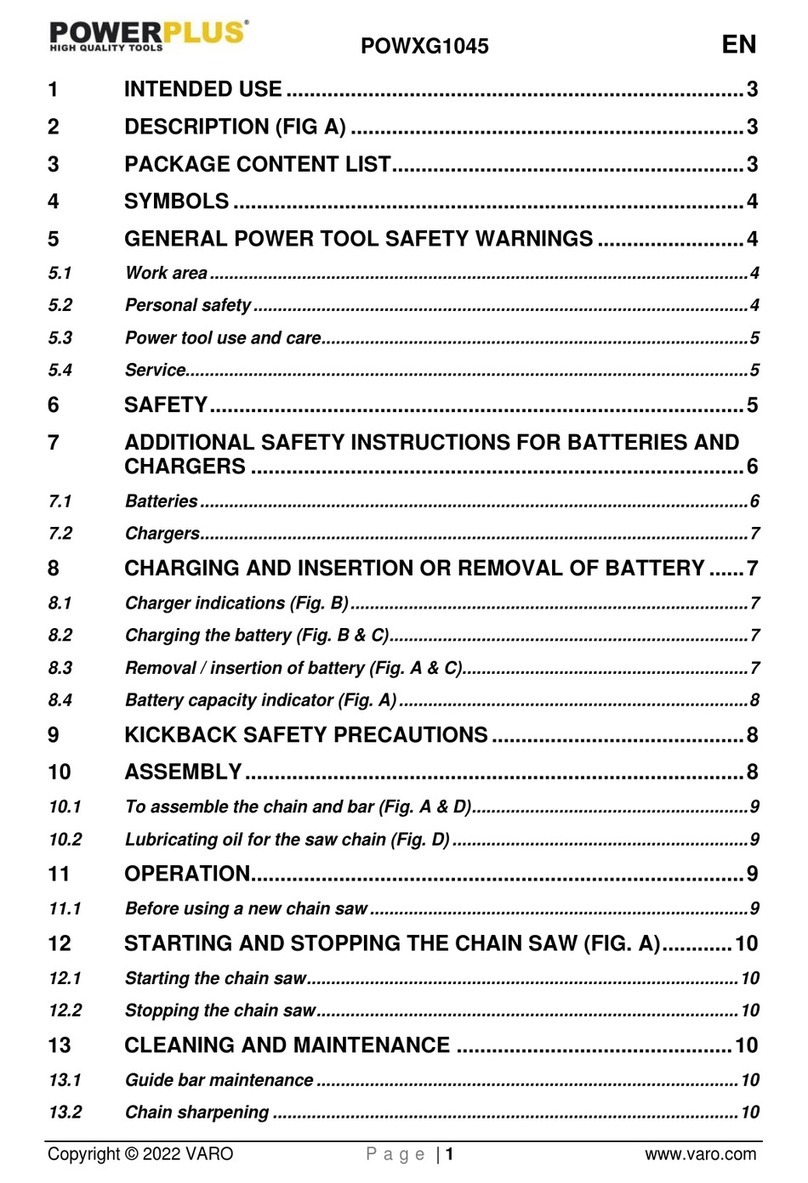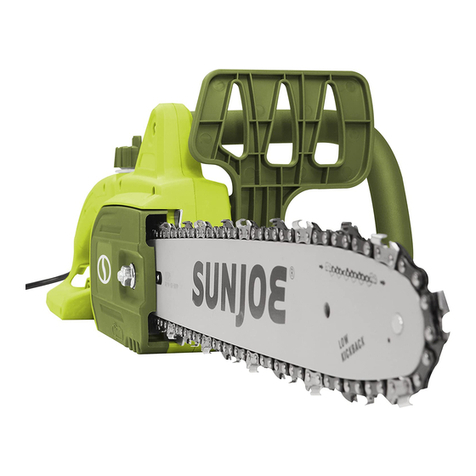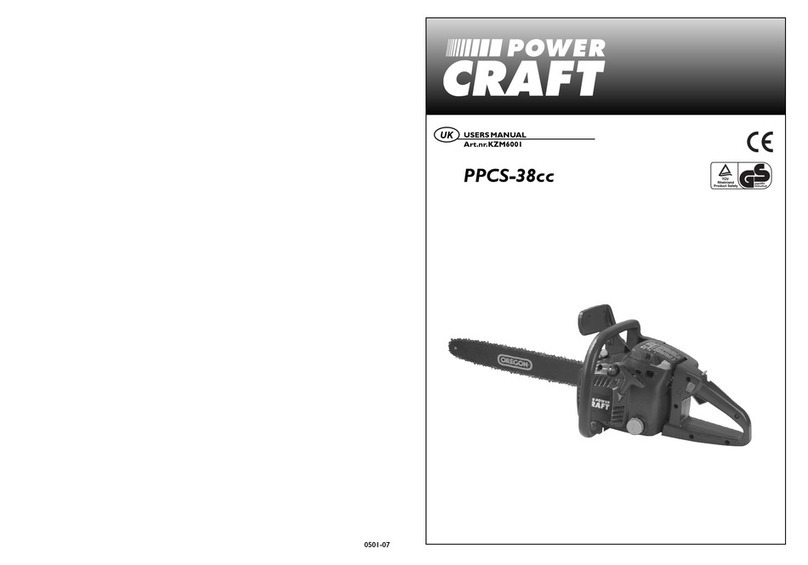BKS 4016T User manual

9096-311228 Rev. 3 2/2/12
BKS 4016T
INSTRUCTION MANUAL
IMPORTANT INFORMATION: Please read these instructions carefully and make
sure you understand them before using this unit. Retain these instructions for future
reference.
BETRIEBSANWEISUNG
WICHTIGE INFORMATION:Lesen Sie diese Hinweise zur Handhabung des
Geräts aufmerksam durch. Verwenden Sie es erst, wenn Sie sicher sind, daß Sie
alle Anweisungen verstanden haben und gut aufbewahren.
GB
DE
MANUEL D’INSTRUCTIONS
RENSEIGNEMENTS IMPORTANTS:Avant d’utilliser cet appareil, veuillez lire
atentivement les instructions et assurez-vous de les avoir comprises. Conservez les
instructions pour référence ultérieure.
MANUAL DE INSTRUCCIONES
INFORMACIÓN IMPORTANTE: Lea atentamente las instrucciones y asegúrese
de entenderlas antes de utilizar esta aparato. Conserve las instrucciones para la
referencia en el futuro.
FR
ES
HANDLEIDING
BELANGRIJKE IMPORTANTS: Lees deze instructies zorgvuldig en wees er zeker
van dat uze begrijpt alvorens de trimmer te gebruiken en bewaar ze voor toekomstige
raadpleging.
NL
LIBRETTO D’ISTRUZIONI
INFORMAZIONI IMPORTANTI: Siete pregati di leggere attentamente questo
istruzioni e prendere dimestichezza con il prodotto prima di usario. Mantenga queste
istruzioni per riferimento futuro.
IT
MANUAL DO OPERADOR
INFORMAÇÕES IMPORTANTES: Queira ler cuidadosamente estas instruções e
tenha certeza de entendê-las antes de usar a cortadores de relva e guarde para
consulta futura.
PT

KEZELÉSI ÚTMUTATÓ
FONTOS INFORMÁCIO: Kérjük, a gép használata előtt olvassa el figyelmesen az
utasításokat, míg nem bizonyos benne, hogy megértette őket.
HU
INSTRUKCJA OBSŁUGI
WAZNE INFORMACJE: Przed rozpoczęciem użytkowania urządzenia, należy
uważnie przeczytać i zrozumieć ninijszą instrukcją. Instrukcje należy przechowywać
do późniejszego z niej korzystania.
PL
BG
ΡЪКОВОДСТВО ЗА ΡАБОТА
ВАЖНА ИНФОΡМАЦИЯ: Прочетете тези инструкции внимателно, за
да ги разберете преди да използвате това устройство. Запазете това
ръководство за бъдеща справка.
NÁVOD K POUŽĺVÁNĺ
DŮLEŽITÁ INFORMACE: Prosíme, než začnete zařízení používat, přečtěte si
pečlivě tyto pokyny a ujistěte se, že jim plně rozumíte.
CZ
ANVÄNDARHANDBOK
VIKTIG INFORMATION: Läs dessa anvisningar noggrant och se till att du förstår
dem innan du använder trimmeren och spara dem för framtida behov.
SE
BRUKERHÅNDBOK
VIKTIG INFORMASJON: Vennligst les disse instruksjonene nøye og pass på at De
forstår dem før De bruker trimmeren og oppbevar den for senere bruk.
NO
BRUGERHÅNDBOG
VIGTIGE OPLYSNINGER: Læs venligst disse instruktioner omhyggeligt og vær
sikker på, at De forstår dem, før De anvender græstrimmeren og gemme til senere
henvisning.
DK
KÄYTTÖOHJEKIRJA
TÄRKEÄÄ: Lue tämä ohjekirja huolellisesti läpi ennen kuin alat käyttää laitetta.
Säilytä ohjekirja myöhempää käyttöä varten.
FI
ΕΓΧΕΙΡΙΔΙΟ ΧΕΙΡΙΣΜΟΕ
ΣΗΜΑΝΤΙΚΕΣ ΠΛΗΡΟΦΟΡΙΕΣ: Εας παρακαλούμε να διαβάσετε αυτέκ τις
οδηγίες προσεχτικά και να σιγουρευτείτε οτι τις, καταλαβαίνετε πριν
χρησιμοποιήσετε την κουρεντική μηχανή.
GR

IDENTIFICATION (WHAT IS WHAT?)
IDENTIFICATION OF SYMBOLS
-- 2 --
Primer Bulb
1. Saw chain
2. Guide Bar
3. Spark Arrester Screen
4. Chain Brake Lever / Hand
Guard
5. Front Handle
6. Starter Handle
7. ON/OFF Switch
8. Safety Trigger
9. Rear Handle / Boot Loop
10. Oil Tank cap
11. Fuel Tank Cap
12. Starter Cover
13. Spiked Bumper
14. Chain Tension Ring
15. Muffler Shield
16. Spark Plug
17. Air Cleaner Cover
18. Choke Lever for Auto
Choke
19. Primer Bulb
20. Throttle/Trigger
21. Chain Cover Control
Button
22. Chain Catcher
23. Guide-bar Cover
SAFETY FEATURES
Numbers preceding the descriptions correspond with the numbers above to help you locate
the safety feature.
1 LOW KICKBACK SAW CHAIN helps
significantly reduce kickback, or the
intensity of kickback, due to specially
designed depth gauges and guard
links.
3 SPARK ARRESTER SCREEN retains
carbon and other flammable
particles over 0.023 inches (0.6mm)
in size from engine exhaust flow.
Compliance with local, state and
federal laws and/or regulations
governing the use of a spark arrester
screen is the user’s responsi-
bility. See Safety Precautions for
additional information.
4 CHAIN BRAKE LEVER / HAND
GUARD protects the operator’s left
hand in the event it slips off the front
handle while saw is running.
4 CHAIN BRAKE is a safety feature
designed to reduce the possibility of
injury due to kickback by stopping a
moving saw chain in milliseconds. It is
activated by the CHAIN BRAKE lever.
7 STOP SWITCH immediately stops
the engine when tripped. Stop switch
must be pushed to ON position to start
or restart engine.
8 SAFETY TRIGGER prevents acciden-
tal acceleration of the engine. Throttle
trigger (21) cannot be squeezed
unless the safety latch is depressed.
22 CHAIN CATCHER reduces the danger
of injury in the event saw chain breaks
or derails during operation. The chain
catcher is designed to intercept a
whipping chain.
13
1
7
56
11
2
17
20 22
21
14
23
16
18
3
4
10
12
15
19
9
8
Read and understand the Instr-
uction Manual and all warning
labels before using the machine.

-- 3 --
SAFETY RULES
WARNING: When using gasoline
tools, basic safety precautions, including the
following, should always be followed to
reduce the risk of serious personal injury
and/or damage to the unit. Read all these
instructions before operating this product
and save these instructions.
WARNING: This machine produces
an electromagnetic field during operation.
This field may under some circumstances
interfere with active or passive medical
implants. To reduce the risk of serious or
fatal injury, we recommend persons with
medical implants to consult their physician
and the medical implant manufacturer
before operating this machine.
WARNING: This tool is designed
only for use by one operator and intended
for forest work. This tool is designed only to
be operated with the right hand on the rear
handle and the left hand on the front handle.
The operator must read and understood the
safety requirements in the instruction
handbook and using the appropriate
personal protective equipment (PPE) before
operating this tool. This tool is not designed
for cutting unintended material, such as
rubber, stone, metals or wood products not
clear of foreign objects.
•DO NOT operate a chain saw with one
hand! Serious injury to the operator,
helpers, bystanders, or any combination
of these persons may result from one-
handed operation. A chain saw is
intended for two-handed use.
•DO NOT operate a chain saw when you
are fatigued, under the influence of drugs,
alcohol or medication.
•Use safety footwear, snug-fitting clothing,
protective gloves, and eye, hearing
and head protection devices.
•Use caution when handling fuel. To
avoide fire, move the chain saw at least
10 feet (3m) from the fueling point before
starting the engine.
•DO NOT allow other persons to be near
when starting or cutting with the chain
saw. Keep bystanders and animals out of
the work area.
•DO NOT start cutting until you have a
clear work area, secure footing, and a
planned retreat path from the falling tree.
•Keep all parts of your body away from the
saw chain when the engine is running.
•Before you start the engine, make sure
that the saw chain is not contacting
anything.
•Carry the chain saw with the engine
stopped, the guide bar and saw chain to
the rear, and the muffler away from your
body.
•DO NOT operate a chain saw that is
damaged, improperly adjusted, or not
completely and securely assembled. Be
sure that the saw chain stops moving
when the throttle control trigger is
released.
•Shut off the engine before setting the
chain saw down.
•Use extreme caution when cutting small
size brush and saplings because slender
material may catch the saw chain and be
whipped toward you or pull you off
balance.
•When cutting a limb that is under tension,
be alert for springback so that you will
not be struck when the tension in the
wood fibers is released.
•Keep the handles dry, clean, and free of
oil or fuel mixture.
•Operate the chain saw only in
well-ventilated areas.
•DO NOT operate a chain saw in a tree
unless you have been specifically trained
to do so.
•All chain saw service, other than the
items listed in the user manual safety and
maintenance instructions, should be
performed by competent chain saw
service personnel.
•When transporting your chain saw, use
the appropriate guide bar scabbard.
Whenever the machine is in use,
safety glasses must be worn to
safeguard against flying objects.
Ear protection must also be used
in order to protect to operators
hearing. If the operator is
working in an area where there is
a risk of falling objects a safety
helmet must also be worn.
Make Sure the Chain Brake is
disengaged! Pull Hand Guard/
Chain Brake back to run.
Acoustic power level LWA
accordance with directive
2000/14/EC + 2005/88/EC
WARNING:
Danger
Wear gloves to protect
your hands
Wear safety boots to protect
your feet
108

-- 4 --
•DO NOT operate your chain saw near or
around flammable liquids or gases
whether in or out of doors. An explosion
and/or fire may result.
•Do not fill fuel tank, oil tank or lubricate
when the engine is running.
•USE THE RIGHT TOOL: Cut wood
only. Do not use the chain saw for
purposes for which it was not
intended. For example, do not use the
chain saw for cutting plastic, masonry, or
nonbuilding materials.
•The first time user should have practical
instruction in manual page 10 (barking
Saw horse) in the use of chain saw and
the protective equipment form an
experienced operator.
•Do not attempt to hold the saw with one
hand only. You cannot control reactive
forces and you may lose control of the
saw, which can result in the skating or
bouncing of the bar and chain along the
limb or log.
•Never run the chainsaw indoors.
Your chainsaw produces poisonous
exhaust as soon as the combustible
engine is started, which may be colorless
and odorless. To use this product can
generate dust, mists and fumes
containing chemicals known to cause
reproductive harm. Be aware of harmful
dust, mist (such as saw dust or oil mist
from chain lubrication) and protect your
self properly.
•Wear gloves and keep your hand warm.
Prolonged use of chainsaws exposing the
operator to vibrations may produce
whitefinger disease. In order to reduce the
risk of whitefinger disease, please wear
gloves and keep your hand warm. If any of
the whitefinger symptoms appear, seek
medical advice immediately.
•When transporting or storing the chain
saw always fit the guide bar cover.
•Drive in the spiked bumper of the chain
saw directly behind the intended hinge
and pivot the saw around this point. The
spiked bumper rolls against the trunk.
•There are 3 parts only, chain, bar and
spark plug, can be replaced by the user
themselves and please use the same
type as showed on the specifications in
the user's manual.
(Type for the plug is NGK CMR7H).
If the other components beyond the prior
parts are defective, then please take your
tools to the nearest Authorized Service
Center for service.
NOTE: This appendix is intended primarily
for the consumer or occasional user. These
models are intended for infrequent use by
homeowners, cottagers, and campers, and
for such general applications as clearing,
pruning, cutting firewood, etc. They are not
intended for prolonged use. If the intended
use involves prolonged periods of opera-
tion, this may cause circulatory problems in
the user’s hands due to vibration.
KICKBACK may occur when the NOSE or
TIP of the guide bar touches an object, or
when wood closes in and pinches the saw
chain in the cut.
Tip contact in some cases may cause a
lightning-fast reverse reaction, kicking the
guide bar up and back toward the operator.
PINCHING the saw chain along the
BOTTOM of the guide bar may PULL the
saw forward away from the operator.
PINCHING the saw chain along the TOP of
the guide bar may PUSH the guide bar
rapidly back toward the operator.
Any of these reactions may cause you to
lose control of the saw, which could result in
serious personal injury.
KICKBACK SAFETY PRECAUTIONS
1. With a basic understanding of kickback,
you can reduce or eliminate the element
of surprise. Sudden surprise contributes
to accidents.
2. Keep a good firm grip on the saw with
both hands, the right hand on the rear
handle, and the left hand on the front
handle, when the engine is running. Use
a firm grip with thumbs and fingers
encircling the chain saw handles. A firm
grip will help you reduce kickback and
maintain control of the saw. Don’t let go.
3. Make sure that the area in which you are
cutting is free from obstructions. Do not
let the nose of the guide bar contact a
log, branch, or any other obstruction
which could be hit while you are
operating the saw.
4. Cut at high engine speeds.
5. Do not overreach or cut above shoulder
height.
6. Follow manufacturer’s sharpening and
maintenance instructions for the saw
chain.
7. Only use replacement bars and chains
specified by the manufacturer or the
equivalent.
NOTE: Low-kickback saw chain is chain
that has met the kickback performance.

-- 5 --
WARNING:
Kickback can lead to
dangerous loss of control of the chain saw
and result in serious or fatal injury to the
saw operator or to anyone standing close
by. Always be alert. Rotational kickback
and pinch-kickback are major chain saw
operational dangers and the leading cause
of most accidents.
Your Chain Saw is provided with a safety
label located on the chain brake lever/hand
guard. This label, along with the safety
instructions on these pages, should be
carefully read before attempting to operate
this unit.
IMPORTANT SAFETY
ASSEMBLY INSTRUCTIONS
WARNING: RED Used to warn that
an unsafe procedure should not be
performed.
WARNING: DO NOT start saw
engine until unit is properly prepared.
WARNING: Always wear protective
gloves when handling chain.
HOW TO READ SYMBOLS AND
COLORS (FIG.1)
WARNING
1. Beware of kickback.
2. Do not attempt to hold saw with one
hand.
3. Avoid bar nose contact.
RECOMMENDED
4. Hold saw properly with both hands.
This unit is designed for occasional
homeowner use and should not be used for
commercial purposes or subjected to heavy
continuous use.
Your new chain saw can be used for a
variety of projects such as cutting firewood,
making fence posts, felling small trees,
limbing, pruning at ground level, and light
carpentry.
Cut only wood or wood products with your
saw.
1. Place power unit on flat surface.
2. Make sure the CHAIN BRAKE®lever is
pulled back into the DISENGAGED
position. (Fig.3A)
3. Loosen button (C) slightly by turning
knob counterclockwise and then turn the
chain tension ring (B) counter-clockwise
to relief chain tension . (Fig.3B)
4. To remove the sprocket cover (A), turn
button (B) counter-clockwise. (Fig.3B)
5. Remove saw chain from around the
guide bar and the sprocket. Slide the
guide bar, from the unit.
6. Place the slotted end of the guide bar
over the bar bolt (D). Slide guide bar
behind clutch drum (E) until the guide bar
stops. (Fig.3C)
7. Spread the chain out with the cutting
edges (F) of the chain pointing in the
DIRECTION OF ROTATION (Fig.3D).
8. Slip the chain around the sprocket (G)
behind the clutch (H). Make sure the
links fit between the sprocket teeth.
(Fig.3E)
Your new chain saw will require adjustment
of chain, filling the fuel tank with correct fuel
mixture and filling the oil tank with lubricating
oil before the unit is ready for operation.
Read the entire user manual before
attempting to operate your unit. Pay
particular attention to all safety
precautions.
Your user manual is both a reference guide
and handbook provided to furnish you
with general information to assemble,
operate and maintain your saw.
GREEN RECOMMENDED
Recommended cutting procedure.
1 2
3 4
Fig. 1
DANGER! BEWARE OF KICKBACK!
Fig. 2A
AA
B
A
A
B
C
Fig. 2B
BEWARE OF:
ROTATIONAL
KICKBACK
(Fig. 2A)
A = Kickback path
B = Kickback
reaction zone
THE PUSH (PINCH
KICKBACK) AND
PULL REACTIONS
(Fig. 2B)
A = Pull
B = Solid objects
C = Push
ASSEMBLY REQUIREMENTS
GUIDE BAR / SAW CHAIN / CLUTCH
COVER INSTALLATION
INTRODUCTION

-- 6 --
Proper tension of saw chain is extremely
important and must be checked before
starting, as well as during any cutting
operation.
Taking the time to make needed
adjustments to the saw chain will result in
improved cutting performance and
prolonged chain life.
WARNING: Always wear heavy duty
glove swhen handling saw chain or making
saw chain adjustments.
CAUTION: A new saw chain
stretches, requiring adjustment after as
few as 5 cuts. This is normal with a new
chain, and the interval between future
adjustments will lengthen quickly.
CAUTION: If saw chain is TOO
LOOSE or TOO TIGHT, the sprocket, bar,
chain, and crankshaft bearings will wear
more rapidly. Study Fig. 5 for information
concerning correct cold tension (A),
correct warm tension (B), and as a guide for
when saw chain needs adjustment (C).
9. Guide the drive links into the groove (I)
and around the end of the bar. (Fig.3E)
NOTE: The saw chain may droop slightly on
the lower part of bar. This is normal.
10. Turn the knob (J) COUNTERCLOCK-
WISE until the TANG (K) is to the end of
its travel. (Fig. 3F)
11. Install the clutch cover making sure the
tang is positioned in the lower hole in the
guide bar. Make sure the chain does not
slip off of the bar.
12. Lock the screw (N) be tight, and follow
step 13 to adjust the chain tension.
13. Turn the tension ring clockwise tight (M);
pull the control button by arrow direction
(L) to turn tightly be clockwise then push
the control button back. (Fig.3G)
NOTE: The guide bar retaining knob is
installed only hand tight at this point
because saw chain adjustment is required.
Follow instructions in Section, Saw Chain
Tension Adjustment.
1. Hold nose of guide bar up and turn
adjustment chain ring (A) CLOCKWISE
to increase chain tension. Turning chain
ring (A) COUNTERCLOCKWISE will
decrease amount of tension on chain.
Ensure the chain fits snugly all the way
around the guide bar. (Fig. 4)
2. After making adjustment, and while still
holding nose of bar in the uppermost
position, tighten the bar retaining
button (B) securely. Chain has proper
tension when it has a snug fit all around
and can be pulled around by gloved
hand. (Fig. 4)
NOTE: If chain is difficult to rotate on
guide bar or if it binds, too much tension
has been applied. This requires minor
adjustment as follows:
A. Loosen the bar retaining knob so they
are finger tight. Decrease tension by
turning the bar adjustment chain ring
COUNTERCLOCKWISE slowly. Move
chain back and forth on bar. Continue to
adjust until chain rotates freely, but fits
snugly. Increase tension by turning bar
adjustment chain ring CLOCKWISE.
B. When saw chain has proper tension,
hold nose of bar in the uppermost
position and tighten the bar retaining
knob securely.
SAW CHAIN TENSION ADJUSTMENT
TO ADJUST SAW CHAIN:
Fig. 5
ABC
Fig. 4
A
B
Fig. 3A
C
Fig. 3B
B
Fig. 3C
F
Fig. 3D
A
D
E
Fig. 3E
J
I
G
H
Fig. 3G Fig. 3F
K
L
M
N

-- 7 --
FUEL AND LUBRICATION
WARNING:The purpose of the
chain brake is to reduce the possibility of
injury due to kickback; however, it cannot
provide the intended measure of protection
if the saw is operated carelessly. Always
test the chain brake before using your saw
and periodically while on the job.
Your chain saw is equipped with a Chain
brake that reduces possibility of injury due to
kickback. The brake is activated if pressure
is applied against brake lever when, as in
the event of kickback, operator’s hand
strikes the lever. When the brake is actuated,
chain movement stops abruptly.
WARNING:Never use straight
gasoline in your unit. This will cause
permanent engine damage and void the
manufacturer’s warranty for that product.
Never use a fuel mixture that has been
stored for over 90 days.
Use regular grade unleaded gasoline
mixed with 40:1 custom 2-cycle engine oil
for best results. Use mixing ratios in Section
FUEL MIXINGTABLE.
Some conventional petrols are being
blended with oxygenates such as alcohol or
an ether compound to meet clean air
standards.Your engine is designed to operate
satisfactorily on any gasoline intended for
automotive use including oxygenated
petrols.
Always refill the chain oil tank each time the
fuel tank is refilled. We recommend using
MEP Chain, Bar and Sprocket Oil, which
contains additives to reduce friction and
wear and to assist in the prevention of pitch
formation on the bar and chain.
Mix fuel with 2 cycle oil in an approved
container. Use mixing table for correct
ratio of fuel to oil. Shake container to
ensure thorough mix.
WARNING:Lack of lubrication voids
engine warranty.
WARNING:If 2-cycle lubricant
other than Custom Lubricant is to be used, it
must be a premium grade oil for 2-cycle air
cooled engines mixed at a 40:1 ratio. Do not
use any 2-cycle oil product with a
recommended mixing ratio of 100:1. If
insufficient lubrication is the cause of engine
damage, it voids the manufacturer’s engine
warranty for that occurrence.
1. The CHAIN BRAKE is DISENGAGED
(chain can move) when BRAKE LEVER
IS PULLED BACK AND LOCKED. Be
sure the chain brake latch is in the OFF
position. (Fig. 6A)
CHAIN BRAKE MECHANICAL TEST
TO TEST CHAIN BRAKE:
2. The CHAIN BRAKE is ENGAGED (chain
is stopped) when brake lever is in forward
position and the chain brake latch is in
the ON position. You should not be able
to move chain. (Fig. 6B)
NOTE:The brake lever should snap into both
positions. If strong resistance is felt, or lever
does not move into either position, do not use
your saw. Take it immediately to a
professional Service Center for repair.
FUEL
MIXING FUEL
FUEL AND LUBRICATION
Gasoline and Oil
Mix 40:1 Oil Only
FUEL MIXING TABLE
RECOMMENDED FUELS
CHAIN AND BAR LUBRICATION
GASOLINE 40:1 Ratio
Custom Lubricant
1 U.S. Gal. 3.2 oz. 95ml (cc)
5 Liters 4.3 oz. 125ml (cc)
4.3 oz. 125ml (cc)
1 lmp. Gal.
Mixing 40 Parts Gasoline
Procedure to 1 part Lubricant
1ml = 1cc
Fig. 6A Fig. 6B
OFF ON

-- 8 --
1. Fill the fuel tank (A) with correct fuel
mixture. (Fig. 7).
2. Fill the oil tank (B) with correct chain and
bar oil (Fig. 7).
3. Be certain the chain brake is disengaged
(C) before starting unit (Fig. 7). 1. Make sure the
on/off switch is in
the “I” position.
2. Depress the primer
bulb 10 times.
3. Pull the starter
rope rapidly 4
times. The engine
should start.
4. If the engine still can not start, follow the
step as “To start engine” in this user
manual.
1. Release trigger and allow engine to
return to idle speed.
2. Press STOP switch down to stop engine.
(Figure 9)
NOTE: For emergency stopping, simply
activate CHAIN BRAKEand move
STOP switch down.
1. Place saw on a clear, firm, flat surface.
2. Start engine.
3. Grasp the rear handle (A) with your right
hand (Fig. 10).
4. With your left hand, hold the front
handle (B) [not CHAIN BRAKElever (C)]
firmly (Fig. 10).
5. Squeeze the throttle trigger to 1/3 throttle,
then immediately activate the CHAIN
BRAKElever (C) (Fig. 10).
6. Chain should stop abruptly. When it does,
immediately release the throttle trigger.
7. If chain brake functions properly, turn the
engine off and return the chain brake to
the DISENGAGED position.
1. Move ON/OFF switch to ON “I”
position. (Fig. 8A)
2. Pull choke lever/throttle (A) advance. This
sets choke and advances throttle for
easier starting. (Fig. 8B)
3. Press primer bulb (B) 10 times. (Fig. 8C)
4. With saw on ground, grip front handle
firmly with left hand and place right foot
inside rear handle. Pull starter rope 4
times with right hand. (Fig. 8D)
NOTE: Easy Start significant reduce the
effort required to start the engine. You must
pull the starter rope out far enough to hear
the engine attempt to start. There is no need
to pull the rope briskly-- there is no harsh
resistance when pulling. Be aware that this
starting method is vastly different from (and
much easier than) what you may be used to.
5. Push choke lever (C) in
completely. (Fig. 8E)
6. Pull starter rope quickly until engine
starts.
7. Allow the engine to run for about 10
seconds. Squeeze and release throttle
trigger (D) to idle engine. (Fig. 8F)
8. If the engine does not start up, repeat
the above steps.
OPERATION
ENGINE PRE-START CHECKS
WARNING: Never start or operate
the saw unless the bar and chain are
properlyinstalled.
WARNING: Activate the chain brake
slowly and deliberately. Keep the chain
from touching anything; don t let the saw tip
forward.
WARNING: If chain does not
stop, turn engine off and take your unit to
the nearest Authorized Service Center for
service.
Fig. 7
B
A
C
TO START ENGINE
RE-STARTING A WARM ENGINE
TO STOP ENGINE
Fig. 9
CHAIN BRAKE OPERATIONAL TEST
TEST CHAIN BRAKE AS FOLLOWS:
Fig. 8A Fig. 8B
A
B
Fig. 8C Fig. 8D
Fig. 8E Fig. 8F
D
C
Test the CHAIN BRAKE periodically to
ensure proper function.
Perform a CHAIN BRAKE test prior to initial
cutting, following extensive cutting, and
definitely following any CHAIN BRAKE
service.

-- 9 --
GENERAL CUTTING INSTRUCTIONS
Adequate lubrication of the saw chain is
essential at all times to minimize friction with
the guide bar.
Never starve the bar and chain of oil.
Running the saw with too little oil will
decrease cutting efficiency, shorten saw
chain life, cause rapid dulling of chain, and
cause excessive wear of bar from
overheating. Too little oil is evidenced by
smoke, bar discoloration or pitch build-up.
NOTE: Saw chain stretches during use,
particularly when it is new, and it will
Your chain saw is equipped with an
automatic clutch driven oiler system. The
oiler automatically delivers the proper
amount of oil to the bar and chain. As the
engine speed increases, so does the oil flow
to the bar pad. There is no flow adjustment.
The oil reservoir will run out at approximately
the same time as the fuel supply runs out.
WARNING: Don't put pressure on
the saw when reaching the end of the cut.
The pressure may cause the bar and chain
to rotate. If the rotating chain strikes some
other object, a reactive force may cause
moving chain to strike the operator.
Felling is the term for cutting down a tree.
Small trees up to 6-7 inches (15-18cm) in
diameter are usually cut in a single cut.
Larger trees require notch cuts. Notch cuts
determine the direction the tree will fall.
Normally felling consists of 2 main cutting
operations, notching (C) and making the
felling cut (D).
Start making the upper notch cut (C) on the
side of the tree facing the felling direction
(E). Be sure you don t make the lower cut
too deep into the trunk.
The notch (C) should be deep enough to
create a hinge (F) of sufficient width and
strength. The notch should be wide enough
to direct the fall of the tree for as long as
possible.
NOTE:Direction of fall (B) is controlled by the
notching cut. Before any cuts are made,
consider the location of larger branches and
natural lean of the tree to determine the way
the tree will fall.
WARNING: A retreat path (A) should
be planned and cleared as necessary before
cuts are started. The retreat path should
extend back and diagonally to the rear of the
expected line of fall, as illustrated in
Fig.11A.
WARNING: Never walk in front of a
tree that has been notched.
Make the felling cut (D) from the other side of
the tree and 1.5 - 2.0 inches (3-5 cm) above
the edge of the notch (C) (Fig.11B)
Never saw completely through the trunk.
Always leave a hinge. The hinge guides the
tree. If the trunk is completely cut through,
control over the felling direction is lost.
Insert a wedge or felling lever in the cut well
before the tree becomes unstable and starts
to move. This will prevent the guidebar from
binding in the felling cut if you have
misjudged the falling direction. Make sure no
bystanders have entered the range of the
falling tree before you push it over.
WARNING: Do not cut down a tree
during high or changing winds or if there is a
danger to property. Consult a tree
professional. Do not cut down a tree if there
is a danger of striking utility wires; notify the
utility company before making any cuts.
CAUTION: If felling a tree on sloping
ground, the chain saw operator should keep
on the uphill side of the terrain, as the tree is
likely to roll or slide downhill after it is felled.
SAW CHAIN / BAR LUBRICATION
AUTOMATIC OILER
occasionally be necessary to adjust and
tighten it. New chain will require adjustment
after about 5 minutes of operation.
FELLING
FELLING A TREE:
Fig. 11A
B
A
GENERAL GUIDELINES FOR FELLING
TREES:
Fig. 11B
Fig. 10
ABC

-- 10 --
FELLING CUT:
WARNING: Before making the final
cut, always recheck the area for bystanders,
animals or obstacles.
Bucking is cutting a fallen log into lengths.
Make sure you have a good footing and
stand uphill of the log when cutting on
sloping ground. If possible, the log should
be supported so that the end to be cut off is
not resting on the ground. If the log is
supported at both ends and you must cut in
the middle, make a downward cut halfway
through the log and then make the
undercut. This will prevent the log from
pinching the bar and chain. Be careful that
the chain does not cut into the ground when
bucking as this causes rapid dulling of the
chain.
When bucking on a slope, always stand on
the uphill side.
1. Use wooden or plastic wedges (A) to
prevent binding the bar or chain (B) in the
cut. Wedges also control felling
(Fig.11C).
2. When diameter of wood being cut is
greater than the bar length, make 2 cuts
as shown (Fig.11D).
1. Log supported along entire length: Cut
from top (overbuck), being careful to
avoid cutting into theground (Fig.13A).
2. Log supported on 1 end: First, cut from
bottom (underbuck) 1/3 diameter of log to
avoid splintering. Second, cut from above
(overbuck) to meet first cut and avoid
pinching (Fig.13B).
3. Log supported on both ends: First,
overbuck 1/3 diameter of log to avoid
splintering. Second, underbuck to meet
first cut and avoid pinching (Fig.13C).
NOTE: The best way to hold a log while
bucking is to use a sawhorse. When this is
not possible, the log should be raised and
supported by the limb stumps or by using
supporting logs. Be sure the log being cut is
securely supported.
A. Hold the saw firmly with both hands and
keep the saw to the right of your body
while cutting.
B. Keep the left arm as straight as possible.
C. Keep weight on both feet.
Limbing a tree is the process of removing
the branches from a fallen tree. Do not
remove supporting limbs (A) until after the
log is bucked (cut) into lengths (Fig.12).
Branches under tension should be cut from
the bottom up to avoid binding the chain
saw.
For personal safety and ease of cutting, the
correct position for vertical bucking is
essential (Fig.14).
WARNING: As the felling cut gets
close to the hinge, the tree should begin to
fall. When tree begins to fall, remove saw
from cut, stop engine, put chain saw down,
and leave area along retreat path (Fig.11A).
WARNING: Never cut tree limbs
while standing on tree trunk.
CAUTION: While the saw is cutting,
be sure the chain and bar are being properly
lubricated.
Fig. 11DFig. 11C
AB
LIMBING
Fig. 12
Fig. 13B
Fig. 13A
Fig. 13C
BUCKING
BUCKING USING A SAWHORSE
VERTICAL CUTTING:
Fig. 14
B
A
A
C600mm

-- 11 --
MAINTENANCE INSTRUCTIONS
All chain saw service, other than items listed
here in your user manual maintenance
instructions, should be performed by a
professional.
A good preventive maintenance program of
regular inspection and care will increase life
and improve performance of your chain saw.
This maintenance checklist is a guide for
such a program.
Cleaning, adjustment, and parts replacement
may be required, under certain conditions, at
more frequent intervals than those indicated.
1. Remove knob (A) holding air filter cover in
place, remove the top cover (B) by
loosening the cover retaining screws.
Cover will lift off. (Fig.15A)
2. Lift the air filter (C) out of air-box (D)
(Fig.15B).
3. Clean air filter. Wash filter in clean, warm,
soapy water. Rinse in clear, cool water. Air
dry completely.
NOTE: It is advisable to have a supply of
spare filters.
4. Install air filter. Install engine / air filter
cover. Make sure latche (E) latch (F) and
cover fit properly. Tighten the cover
retaining knob securely. (Fig.15C &
Fig.15D)
1. Remove the fuel tank cap.
2. Bend a piece of soft wire to from a hook at
the end.
3. Reach into fuel tank opening and hook fuel
line. Carefully pull the fuel line toward the
opening until you can reach it with your
fingers.
NOTE: Do not pull hose completely out of
tank.
4. Lift filter (A) out of tank (Fig.16).
5. Pull filter off with a twisting motion. Discard
filter.
6. Install new filter. Insert end of filter into
tank opening. Make sure filter sits in
bottom corner of tank. Use a long
screwdriver to aid in filter placement if
necessary.
7. Fill tank with fresh fuel / oil mixture. See
Section FUEL AND LUBRICATION.
Install fuel cap.
1. Remove the 2 bolts (A) and pull muffler
out. (Fig. 17A).
2. Remove the 2 screws that holds the cover
(C). (Fig.17B)
3. Discard the used spark arrester screen (D)
andreplace it with a new one.
4. Reasemble the muffler components and
install the muffler to the cylinder. Tighten
securely.
WARNING: Never perform mainten-
ance when the engine is hot, to avoid any
chance of burning hands or fingers.
NOTE: A clogged spark arrester screen will
dramatically reduce engine performance.
WARNING: Never operate your saw
without a fuel filter. The fuel filter should be
replaced after each 20 hours of use. Drain
fuel tank completely before changing filter.
CAUTION: Never operate saw
without the air filter. Dust and dirt will be
drawn into engine and damage it. Keep the
air filter clean!
PREVENTIVE MAINTENANCE
AIR FILTER
TO CLEAN AIR FILTER:
Fig. 15A
A
Fig. 15B
C
D
B
Fig. 15C
E
Fig. 15D
F
F
B
FUEL FILTER
Fig. 16
A
SPARK ARRESTER SCREEN
HOURS OF
EACH
MAINTENANCE
CHECKLIST USE OPERATION
ITEM ACTION
Screws/Nuts/Bolts Inspect/Tighten
Air Filter Clean or Replace
Fuel Filter/Oil Filter Replace
Spark Plug Clean/Adjust/Replace
Spark Arrester Screen Inspect
Fuel Hoses Inspect
10 20
Replace as Required
Replace as Required
Chain brake Inspect
componentsReplace as Required

-- 12 --
NOTE: For efficient operation of saw engine,
spark plug must be kept clean and properly
gapped.
1. Push STOP switch down.
2. Remove knob (A) holding air filter cover in
place, remove the top cover (B) by
loosening the cover retaining screws.
Cover will lift off. (Fig.18A)
3. Disconnect the wire connector (C) from the
spark plug (D) by pulling and twisting at the
same time (Fig. 18B).
4. Remove spark plug with spark plug socket
wrench. DO NOT USE ANY OTHER
TOOL.
5. Check electtrode gaps with wire feeler
gauge and set gaps to .025” (.635mm) if
necessary.
6. Reinstall a new spark plug.
NOTE: A resistor spark plug must be used for
replacement.
NOTE: This spark ignition system meets all
requirements of the Interference-Causing
Equipment Regulations.
1. Remove spark plug.
2. Pull starter rope briskly to clear excess oil
from combustion chamber.
3. Clean and gap spark plug or install a new
spark plug with proper gap.
4. Prepare unit for operation.
5. Fill fuel tank with proper fuel / oil mixture.
See FUEL AND LUBRICATION Section.
Frequent lubrication of the guide bar (railed
bar which supports and carries the saw
chain) sprocket tip is required. Proper
maintenance of the guide bar, as explained in
this section, is essential to keep your saw in
good working condition.
Lubrication of the sprocket tip is
recommended after 10 hours of use or once
a week, which ever occurs first. Always
thoroughly clean guide bar sprocket tip
before lubrication.
The Lube Gun (optional) is recommended for
applying grease to the guide bar sprocket tip.
The Lube Gun is equipped with a needle
nose tip which is necessary for the efficient
application of grease to the sprocket tip.
Storing a chain saw for longer than 30 days
requires storage maintenance. Unless the
storage instructions are followed, fuel
remaining in the carburetor will evaporate,
leaving gum-like deposits. This could lead to
difficult starting and result in costly repairs.
1. Remove the fuel tank cap slowly to release
any pressure in tank. Carefully drain the
fuel tank.
2. Start the engine and let it run until the unit
stops to remove fuel from carburetor.
3. Allow the engine to cool (approx. 5
minutes).
4. Using a spark plug wrench, remove the
spark plug.
1. Press the STOP switch down.
NOTE: It is not necessary to remove the saw
chain to lubricate the guide bar sprocket tip.
Lubrication can be done on the job.
2. Clean the guide bar sprocket tip.
3. Using the Lube Gun (optional), insert
needle nose into the lubrication hole and
inject grease until it appears at outside
edge of sprocket tip (Fig. 20).
CAUTION: Never store a chain saw
for longer than 30 days without performing
the following procedures.
The carburetor was preset at the factory for
optimum performance. If further adjustments
are necessary, please take your unit to the
nearest qualified service technician.
WARNING: Wear heavy duty work
gloves when handling the bar and chain.
CAUTION: The sprocket tip on your
new saw has been pre-lubricated at the
factory. Failure to lubricate the guide bar
sprocket tip as explained below will result in
poor performance and seizure, voiding the
manufacturer’s warranty.
Fig. 17A
A
Fig. 17B
BC
B
B
D
SPARK PLUG
Fig. 18A
A
Fig. 18B
C
D
B
CARBURETOR ADJUSTMENT
STORING A CHAIN SAW
5. Pour 1 teaspoon of clean 2-cycle oil into
the combustion chamber. Pull starter rope
slowly several times to coat internal
components. Replace spark plug. (Fig. 19)
NOTE: Store the unit in a dry place and away
from possible sources of ignition such as a
furnace, gas hot water heater, gas dryer, etc.
Fig. 19
REMOVING A UNIT FROM STORAGE
GUIDE BAR MAINTENANCE
SPROCKET TIP LUBRICATION:
TOOLS FOR LUBRICATION:
TO LUBRICATE SPROCKET TIP:

-- 13 --
WARNING: Always wear protective
gloves during maintenance operations. Do
not carry out maintenance when the engine is
hot.
WARNING: After 3 to 4 of your
sharpening of the cutting teeth, have the saw
chain sharpened in any authorised service.
They will sharpen the depth limiter as well,
which provides the distance.
CHAIN SHARPENING - The pitch of the
chain (Fig. 21) is 3/8” LoPro x .050”.
Sharpen the chain using protective gloves
and a round file of ø5/32” (4mm).
Always sharpen the cutters only with outward
strokes (Fig. 22) observing the values given
in Fig. 21.
After sharpening, the cutting links must all
have the same width and length.
WARNING: A sharp chain produces
welldefined chips. When your chain starts to
produce sawdust, it is time to sharpen.
After every 3-4 times the cutters have been
sharpened you need to check the height of
the depth gauges and, if necessary, lower
them using the flat file and template supplied
optional, then round off the front corner.
(Fig. 23)
WARNING: Proper adjustment of the
depth gauge is as important as proper
sharpening of the chain.
WARNING: Never mount a new
chain on a worn sprocket or self-aligning ring.
WARNING: When having wrong
sharpened chain, there may occur a higher
danger of kickback.
WARNING: All cutting teeth must be
similarly long. Different length of the teeth
can cause rough run of the chain or its
rupture, as well.
4. Rotate saw chain by hand. Repeat
lubrication procedure until the entire
sprocket tip has been greased.
1. To sharpen the saw chain, use the suitable
sharpen-ing tools:
- Round chain file ø5/32”(4mm).
- File leading
- Chain measuring calibre.
These tools can be bought in any
specialsed stores.
2. To gain well shaped sawdust particles, use
sharp chain. If there appears wooden
powder, you must sharpen the saw chain.
GUIDE BAR- The bar should be reversed
every 8 working hours to ensure uniform
wear.
Keep the bar groove and lubrication hole
clean using a bar groove cleaner (optional).
(Fig. 24)
Check the bar rails frequently for wear and, if
necessary, remove the burs and square-up
the rails using a flat file. (Fig.25)
3. Minimum length of the teeth must be 4mm.
If they are shorter, remove the saw chain.
4. Angles, which the teeth are under, must be
followed.
5. To sharpen the chain basically, make 2 to
3 pulls of the file from the inside out.
Most guide bar problems can be
prevented merely by keeping the chain
saw well maintained.
Insufficient guide bar lubrication and
operating the saw with chain that is TOO
TIGHT will contribute to rapid bar wear.
To help minimize bar wear, the following
guide bar maintenance procedures are
recommended.
Chain sharpening requires special tools to
ensure that cutters are sharpened at the
correct angle and depth. For the
inexperienced chain saw user, we
recommend that the saw chain be
professionally sharpened by the nearest
professional Service Center. If you feel
comfortable sharpening your own saw chain,
special tools are available from the
professional Service Center. For
non-experienced users of the chain saw, we
recommend to have the chain sharpened by
a specialist in any authorised service.
Fig. 20
GUIDE BAR MAINTENANCE:
CHAIN SHARPENING:
Fig. 21
Fig. 22 Fig. 23
Fig. 24 Fig. 25

-- 14 --
WARNING: Always stop unitanddisconnect spark plugbefore performingall of the
recommended remediesbelow except remediesthat require operation of theunit.
TROUBLESHOOTING TABLE
CHAIN MAINTENANCE
BREAKING IN A NEW SAW CHAIN:
CHAIN LUBRICATION:
BAR WEAR - Turn guide bar frequently at
regular intervals (for example, after 5
hours of use), to ensure even wear on top
and bottom of bar.
OIL PASSAGES - Oil passages on the bar
should be cleaned to ensure proper
lubrication of the bar and chain during
operation.
NOTE: The condition of the oil passages
can be easily checked. If the passages are
clear, the chain will automatically give off a
spray of oil within seconds of starting the
saw. Your saw is equipped with an
automatic oiler system.
CHAIN TENSION:
Check the chain tension frequently and
adjust as often as necessary to keep the
chain snug on the bar, but loose enough to
be pulled around by hand.
A new chain and bar will need chain
readjustment after as few as 5 cuts. This is
normal during the break-in period, and the
interval between future adjustments will
begin to lengthen quickly.
WARNING:Never have more than 3
links removed from a loop of chain. This
could cause damage to the sprocket.
Always make sure the automatic oiler
system is working properly. Keep the oil
tank filled with Chain, Bar and Sprocket Oil.
Adequate lubrication of the bar and chain
during cutting operations is essential to
minimize friction with the guide bar.
Never starve the bar and chain of lubricating
oil. Running the saw dry or with too little oil
will decrease cutting efficiency, shorten saw
chain life, cause rapid dulling of chain, and
lead to excessive wear of bar from
overheating. Too little oil is evidenced by
smoke or bar discoloration.
PROBLEM
Unit won’t start or starts
but will not run.
Unit starts, but engine
has low power.
Engine hesitates.
No power under load.
Runs erratically.
Smokes excessively.
PROBABLE CAUSE
Incorrect starting procedures.
Incorrect carburetor mixture
adjustment setting.
Incorrect carburetor mixture
adjustment setting.
Incorrect carburetor mixture
adjustment setting.
Incorrect carburetor mixture
adjustment setting.
Fouled spark plug
Fuel filter plugged.
Dirty spark arrester screen.
Dirty air filter.
Incorrectly gapped spark plug.
Incorrect fuel mixture.
CORRECTIVE ACTION
Follow instructions in the User Manual.
Have carburetor adjusted by an Authorized
Service Center.
Have carburetor adjusted by an Authorized
Service Center.
Have carburetor adjusted by an Authorized
Service Center.
Have carburetor adjusted by an Authorized
Service Center.
Clean / gap or replace plug.
Replace fuel filter.
Replace spark arrester screen.
Remove, clean and reinstall filter.
Clean / gap or replace plug.
Use properly mixed fuel (40:1 mixture).

-- 15 --
DECLARATION OF CONFORMITY
Business name of the manufacturer: hortus GmbH
Full address of the manufacturer: Hans-Lorenser-Str 40, 89079 Ulm,
Germany
We declaring that the machinery
Product name: Chain saw
Commercial name: Petrol chain saw
Function: Chain-saws for forest service
Model: BKS 4016T
Type: Gasoline powered
Serial number: 11001S100001~21365S999999
Fulfils all the relevant provisions of Directives
2006/42/EC, 2004/108/EC, 2000/14/EC+2005/88/EC
Based on EC type-examination of
Name, address and identification number of the notified body:
TÜV Reinland LGA Products GmbH
Tillystrasse 2, 90431 Nuremberg
Number of the EC type-examination certificate:
BM 50218734
and tested in accordance with below standards
EN ISO 11681-1:2008
EN ISO 14982:2009
Person authorised to compile the technical file and making
this declaration:
Name, surname : Bo R Jonsson
Position/Title : R&D Manager
Address : Hans-Lorenser-Str 40, 89079 Ulm, Germany
Place and date of the declaration: Germany 2011/12/20

-- 16 --
TECHNICAL DATA SHEET
Model No. . . . . . . . . . . . . . . . . . . . . . . . . . . . . . . . . . . . . . . . . . . . . . . . . . . . BKS 4016T
Rated Net Power . . . . . . . . . . . . . . . . . . . . . . . . . . . . . . . . . . . . . . . . . . . . . . . . . . . . . . 1.52 kW
The Usable Cutting Lengths . . . . . . . . . . . . . . . . . . . . . . . . . . . . . . . . . . . . . . . . . . . . . . 37 cm
Bar Cutting Length . . . . . . . . . . . . . . . . . . . . . . . . . . . . . . . . . . . . . . . . . . . . . . . . . . . . . 40 cm
Chain Pitch . . . . . . . . . . . . . . . . . . . . . . . . . . . . . . . . . . . . . . . . . . . . . . . . . . . . . . . . . . 9,53 mm (3/8”)
Chain Gauge . . . . . . . . . . . . . . . . . . . . . . . . . . . . . . . . . . . . . . . . . . . . . . . . . . . . . . . . . . 1.27 mm (0.05”)
Idle Speed (Max.) . . . . . . . . . . . . . . . . . . . . . . . . . . . . . . . . . . . . . . . . . . . . . . . . . . . . . 3300 min-1
Recommended maximum speed
with cutting attchment . . . . . . . . . . . . . . . . . . . . . . . . . . . . . . . . . . . . . . . . . . . . . . . . . . 12500 min-1
Fuel Capacity . . . . . . . . . . . . . . . . . . . . . . . . . . . . . . . . . . . . . . . . . . . . . . . . . . . . . . . . . 250 cm3
Oil Capacity . . . . . . . . . . . . . . . . . . . . . . . . . . . . . . . . . . . . . . . . . . . . . . . . . . . . . . . . . . 150 cm3
Anti Vibration . . . . . . . . . . . . . . . . . . . . . . . . . . . . . . . . . . . . . . . . . . . . . . . . . . . . . . . . . Yes
Drive Sprocket . . . . . . . . . . . . . . . . . . . . . . . . . . . . . . . . . . . . . . . . . . . . . . . . . . . . . . . . 6 Teeth
Easy Start . . . . . . . . . . . . . . . . . . . . . . . . . . . . . . . . . . . . . . . . . . . . . . . . . . . . . . . . . . . . Yes
Auto Choke . . . . . . . . . . . . . . . . . . . . . . . . . . . . . . . . . . . . . . . . . . . . . . . . . . . . . . . . . . . Yes
Chain Brake . . . . . . . . . . . . . . . . . . . . . . . . . . . . . . . . . . . . . . . . . . . . . . . . . . . . . . . . . . Yes
Clutch . . . . . . . . . . . . . . . . . . . . . . . . . . . . . . . . . . . . . . . . . . . . . . . . . . . . . . . . . . . . . . Yes
Automatic Chain Oiler . . . . . . . . . . . . . . . . . . . . . . . . . . . . . . . . . . . . . . . . . . . . . . . . . . Yes
Low Kick-back Chain Type (Oregon) . . . . . . . . . . . . . . . . . . . . . . . . . . . . . . . . . . . . . . 91PJ056X
Type of Guide Bar (Oregon) . . . . . . . . . . . . . . . . . . . . . . . . . . . . . . . . . . . . . . 160SDEA041
Low Kick-back Chain Type (Carlton) . . . . . . . . . . . . . . . . . . . . . . . . . . . . . . . . . . . . . .
N1C-BL-M56E SK
Type of Guide Bar (Carlton) . . . . . . . . . . . . . . . . . . . . . . . . . . . . . . . . . . . . . . .16-10-N156-MHC
Net Weight (Without guide bar and chain) . . . . . . . . . . . . . . . . . . . . . . . . . . . . . . . . . . 4.8 Kg
Sound pressure level at ear (EN ISO 11681-1)(K=1.5) . . . . . . . . . . . . . . . . . . . . . . . . . .99 dB(A)
Sound power level (EN ISO 11681-1)(K=1.5) . . . . . . . . . . . . . . . . . . . . . . . . . . . . . . . . 105 dB(A)
Guarantee sound power level
(2000/14/EC+2005/88/EC)
. . . . . . . . . . . . . . . . . . . . . . . . . . 108 dB(A)
Braking Time (Max.) . . . . . . . . . . . . . . . . . . . . . . . . . . . . . . . . . . . . . . . . . . . . . . . . . . . 0.12 s
Vibration Level (Max.) (K=1.5). . . . . . . . . . . . . . . . . . . . . . . . . . . . . . . . . . . . . . . . . . . . 15 m/s2
Fuel Consumption . . . . . . . . . . . . . . . . . . . . . . . . . . . . . . . . . . . . . . . . . . . . . . . . . . . . . 530.15 g/kWh
Engine Displacement . . . . . . . . . . . . . . . . . . . . . . . . . . . . . . . . . . . . . . . . . . . . . . . . . . . 40 cm3 (2.4 cu-in)

-- 17 --
1. Sägekette
2. Leitschiene oder
Führungsschiene
3. Funkengitter
4. Kettenbremshebel/
vorderer Handschutz
5. Vorderer Griff
6. Startergriff
7. EIN/AUS-Schalter
8. Sicherheitssperre
9. Hinterer Griff/ Stiefelschlaufe
10. Öltankkappe
11. Treibstofftankkappe
12. Lüftergehäuse
13. Prelldorn
14. Schienenbefestigungsmutter
15. Auspuffschutz
16. Zündkerze
17. Luftfilterabdeckung
18. Drosselklappenhebel für
Automatik Choke
19. Kraftstoffpumpe
20. Gashebel
21. Betätigungsknopf der
Kettenabdeckung/
Kettenspannung
22. Kettenfänger
23. Abdeckung der
Leitschiene
Die Ziffern der nachstehenden Beschreibung entsprechen den Ziffern auf der vorhergehenden
Seite, damit Sie die Sicherheitsfunktionen leichter finden können.
1Sägekette mit geringem Rückschlag
hilft Ihnen mit speziell entwickelten
Sicherheitseinrichtungen Rückschläge
oder deren Kraft abzufangen.
3FUNKENGITTER hält Kohlenstoff und
andere entzündbare Partikel größer als
0,6 mm (0,023 Zoll) vom Maschinenau-
spuff fern. Der Benutzer ist verantwortlich
für Übereinstimmung mit Gemeinde,
Landesund Bundesgesetzen und/oder
Bestimmungen, die die Verwendung
eines Funkengitters zum Inhalt
haben. Zusatzinformationen finden Sie
unter Sicherheitsmaßnahmen.
4Kettenbremshebel/ Handschutz schützt
die linke Hand des Benutzers, sollte sie
bei laufender Säge vom vorderen Griff
abrutschen.
4Kettenbremse ist eine Sicherheitsfunk-
tion zur Minderung von Verletzungen
aufgrund von Rückschlägen, indem eine
laufende Säge in Millisekunden
angehalten wird. Sie wird vom
Kettenbremshebel aktiviert.
7Stoppschalter hält den Motor sofort an,
wenn er ausgeschaltet wird. Der Stopp-
schalter muss auf EIN gesetzt werden,
um den Motor (erneut) zu starten.
8Sicherheitsauslöser verhindert eine zuf-
ällige Beschleunigung des Motors. Der
Gashebel (21) kann nur gedrückt werden,
wenn der Sicherheitsauslöse
rhineingedrückt ist.
22 Kettenfänger mindert die Gefahr von
Verletzungen, sollte die Sägekette bei
laufendem Motor reißen oder
entgleiten. Der Kettenfänger soll eine um
sich schlagende Kette auffangen.
HINWEIS: Machen Sie sich mit der Säge und
ihren Teilen vertraut.
BESCHREIBUNG DER GERÄTETEILE
ERKLÄRUNG DER SYMBOLE
SICHERHEITSFUNKTIONEN
Lesen Sie vor Inbetriebnahme
des Trimmers das Betriebsha-
ndbuch aufmerksam durch. Kraftstoffpumpe
13
1
7
56
11
2
17
20 22
21
14
23
16
18
3
4
10
12
15
19
9
8

-- 18 --
WARNUNG: Während der Arbeit mit
Motorgeräten müssen stets grundlegende
und folgende Sicherheitsmassnahmen befo-
lgt werden, um das Risiko von Körperverlet-
zungen und/ oder Schäden des Geräts so
gering wie möglich zu halten.
Lesen Sie alle folgenden Hinweise, bevor Sie
dieses Produkt bedienen und bewahren Sie
diese Hinweise gut auf.
WARNUNG: Diese Maschine produ-
ziert während des Betriebs ein elektromagne-
tisches Feld. Dieses Feld kann unter einigen
Umständen die aktiven oder passiven medi-
zinischen Implantate beeinträchtigen. Um die
Gefahr der ernsten oder tödlichen Verletzung
zu verringern, empfehlen wir, Personen mit
medizinischen Implantaten ihren Arzt und den
Hersteller vom medizinischen Implantat zu ko-
nsultieren, bevor die Maschine bedient wird.
WARNUNG: Diese Kettensäge ist
nur durch eine Person und nur zum Sägen
von Holz zu benutzen. Die Kettensäge muss
mit der rechten Hand am hinteren Handgriff
und mit der linken Hand am vorderen
Handgriff gehalten werden. Vor Gebrauch der
Kettensäge muss der Benutzer alle Hinweise
und Anweisungen in der Gebrauchsanweis-
ung gelesen und verstanden haben. Der
Benutzer muss angemessene persönliche
Schutzausrüstung (PSA) tragen.
Mit der Kettensäge darf nur Holz gesägt
werden. Das Bearbeiten von Materialien wie
bspw. Kunststoff, Stein, Metall oder Holz, wel-
ches Fremdkörper enthält (bspw. Nägel oder
Schauben), darf nicht bearbeitet werden!
•Arbeiten Sie mit der Säge NICHT einhändig!
Andernfalls besteht die Gefahr, dass Bedi-
enpersonen, Helfer oder Zuschauer verletzt
werden können. Eine Kettensäge ist für
einen zweihändigen Betrieb ausgelegt.
•Arbeiten Sie mit der Säge NICHT, wenn Sie
müde oder unter dem Einfluss von Drogen,
Alkohol oder Medikamenten sind.
•Tragen Sie Sicherheitsschuhe, eng anlieg-
ende Kleidung, Arbeitshandschuhe, Schutz-
brille, Ohrschützer und einen Kopfschutz.
•Seien Sie vorsichtig im Umgang mit
Treibstoff. Starten Sie die Säge im Abstand
von mindestens 3m vom Auffüllort des
Treibstoffs, um Feuer zu vermeiden.
•Wenn Sie die Kettensäge starten oder mit
ihr schneiden, dürfen sich KEINE anderen
Personen in der Nähe aufhalten. Verwehren
Sie Zuschauern und Tieren den Zutritt zum
Arbeitsbereich.
•Schneiden Sie ERST dann, wenn der
Arbeitsbereich gesäubert ist, Sie einen
sicheren Stand und einen Rückzugsweg vor
dem fallenden Baum eingeplant haben.
•Wenn der Motor lauft, müssen alle
Körperteile von derKettensäge wegweisen.
•Vergewissern Sie sich vor dem Anlassen
der Kettensäge, dass sie keine
Gegenstände berührt.
•Tragen Sie die Kettensäge nur, wenn der
Motor angehalten hat, die Leitschiene und
die Kette sich hinten befindet undder
Auspuff von Ihrem Körper wegweist.
•Nehmen Sie KEINE Kettensäge in Betrieb,
die beschädigt, falsch eingestellt oder
unvollständig und locker montiert ist.
Vergewissern Sie sich, dass die Kettensäge
angehalten hat, wenn der Betriebsauslöser
freigegeben wird.
•Schalten Sie den Motor aus, bevor Sie die
Kettensäge absetzen.
•Seien Sie beim Schneiden kleiner Büsche
und Schößlinge äußerst vorsichtig, denn
das dünne Astwerk kann sich in der Säge
verfangen und in ihre Richtung schlagen,
oder Sie aus dem Gleichgewicht bringen.
•Achten Sie beim Schneiden eines unter
Spannung stehenden Astes auf einen
möglichen Rückschlag, wenn die
Spannung des Holzes plötzlich nachlässt.
•Achten Sie darauf, dass die Griffe trocken,
sauber und frei von Öl oder
Treibstoffgemisch sind.
•Arbeiten Sie mit der Kettensäge nur an gut
belüfteten Orten.
•Schneiden Sie mit der Kettensäge KEINEN
Baum, außer Sie besitzen eine
entsprechende Ausbildung.
Stellen Sie sicher, dass die
Kettenbremse gelöst ist. Ziehen
Sie vor dem Betrieb den Handgriff/
Kettenbremse zurück
WARNUNG:
Gefahr
108
Bei Verwendung des Gerätes
muss eine Schutzbrille getragen
werden, um vor fliegenden Obje-
kten zu schützen. Zum Schutz
des Hörvermögens des Benutz-
ers muss ein Ohrenschutz getra-
gen werden. Wird das Gerät an
einem Ort verwendet, an dem
Gefahr von fallenden Objekten
besteht, muss außerdem ein Sic-
herheitshelm getragen werden.
Tragen Sie feste Handschuhe
zum Schutz der Hände
Schallleistungspegel
entsprechend der Richtlinie
2000/14/EC+2005/88/EC
Sicherheitsschuhe zum Schutz
der Füße tragen
SICHERHEITSHINWEISE

-- 19 --
•Die gesamte Wartung der Kettensäge,
abgesehen von den in dieser Bedienungs-
und Wartungsanleitung angegebenen
Punkten, darf nur vom Kundendienst für
Kettensägen ausgeführt werden.
•Bringen Sie für den Transport der Kette-
nsäge das Futteral für die Leitschiene an.
•Arbeiten Sie mit der Kettensäge NICHT
neben oder in Gegenwart von entzünd-
baren Flüssigkeiten oder Gasen, sei es in
Außen- oder in Innenraumen. Es besteht
dabei Explosions- und/oder Brandgefahr.
•Füllen Sie keinen Treibstoff, Öl oder
Schmierstoff ein, wenn die Kettensäge läuft.
•NUR GEEIGNETES SÄGEMATERIAL
VERWENDEN: Schneiden Sie nur Holz.
Verwenden Sie die Kettensäge nicht für
Arbeiten, für die sie ungeeignet ist.
Schneiden Sie mit der Kettensäge z.B. kein
Plastik, Mauerwerk oder nicht zum Bau
gehörige Materialien.
•Anfänger sollte sich von erfahrene Bediener
im Umgang mit der Kettensäge und der
Schutzausrüstung unterweisen lassen und
sollten zu Anfang damit üben, auf einem
Sägebock üben Holzklötze zu schneiden.
Für das anfängliche Training, können Sie
der Seite 25 (Sägebock) dieser
Bedienanweisung folge leisten.
•
Versuchen Sie nicht die Säge mit nur
einer Hand zu halten. Sie können entst-
ehenden Kräfte nicht kontrollieren und
verlieren vielleicht die Kontrolle über die
Säge, was ein Rutschen oder Springen
des Schwertes und der Säge entlang der
Äste oder der Holzes zur folge haben
kann.
•Betreiben Sie die Kettensäge niemals in
geschlossenen Räumen.
Ihre Kettensäge erzeugt giftige Abgase,
welche möglicherweise unsichtbar und
geruchlos sind, sobald der Verbrennun-
gsmotor gestartet ist. Die Nutzung des
Produktes kann Staub, Dunst und Dämpfe
erzeugen, die Chemikalien enthalten von
denen man weiß, dass furchtbaren
Schaden verursachen können. Seien Sie
sich schädlichem Staub, Dunst und
Dämpfen bewusst (wie z.B. Sägestaub oder
Schmieröldampfen) und schützen Sie sich
angemessen.
•Tragen Sie Handschuhe und halten Sie Ihre
Hände warm. Andauerndes Benutzen der
Kettensäge setzt den Operator Schwing-
ungen aus, welche möglicherweise zu
Erkrankung am Weißfingersyndrom führen.
Um das Risiko der Erkrankung am
Weißfingersyndrom zu verringern, tragen
Sie bitte Handschuhe und halten Ihre Hand
warm. Wenn eines der Symptome des
Weißfingersyndroms auftreten, suchen Sie
umgehend ärztlichen Rat.
•Bei Transport oder Aufbewahrung der
Kettensäge stets die Schutzabdeckung
aufziehen.
•Rammen Sie den Krallenanschlag der
Kettensäge direkt hinter den beabsichtigten
Anschlagspunkt und lassen Sie die Säge
sich um diesen Punkt drehen.Der
Krallenanschlag rollt entgegen dem Stamm.
•Es sind nur 3 Teile, die Kette, die
Führungsschiene und die Zündkerze, die
vom Benutzer selbst ausgetauscht werden
können. Bitte benutzen Sie die selben
Typen die auch in der Spezifikation und in
der Bedienungsanleitung angegeben sind.
(Der Zündkerzentyp ist NGK CMR7H)
Wenn andere Komponenten außer dieser
Hauptkomponenten defekt sind, dann
bringen Sie Ihr Gerät bitte zum
nächstgelegenen von autorisiertenService
Zentrum zur Reparatur.
HINWEIS: Der nachfolgende Anhang ist
hauptsächlich für den Endverbraucher oder
dem Gelegenheitsbenutzer gedacht. Diese
Modelle sind für eine gelegentliche
Verwendung von Hauseigentümern, Landh-
ausbewohner und Campern ausgelegt und
dienen für alle allgemeine Arbeiten, z.B.
Roden, Beschneiden, Brennholz schneiden,
etc.Sie sind nicht für längere Arbeiten
vorgesehen.Bei längeren Arbeiten kann es
auf Grund von Vibrationen in den Handen der
Bedienungsperson zu Kreislaufstörungen
kommen.
RÜCKSCHLAG kann auftreten, wenn die
NASE oder SPITZE der Leitschiene einen
Gegenstand berührt, oder wenn das Holz die
Kettensäge im Schnitt einklemmt.
Wenn die Schienenspitze Kontakt bekommt,
könnte die Leitschiene blitzschnell nach oben
und zurück zur Bedienungsperson
geschlagen werden.
KLEMMT die Kettensäge längs der
UNTERKANTE der Leitschiene, kann sie von
der Bedienungsperson weg nach vorne
GEZOGEN werden. KLEMMT die Kettensage
langs der OBERKANTE der Leitschiene, kann
sie schnell zurück zur Bedienungsperson
GESCHLAGEN werden.
In beiden Fällen können Sie die Kontrolle über
die Säge verlieren und sich dabei schwer
verletzen.
VORSICHTSMASSNAHMEN BEI RÜCKSCHLÄGEN
1. Ein grundlegendes Verständnis von Rück-
schlägen kann das Überraschungsmom-
ent mindern oder ausschließen. Plötzliche
Reaktionen tragen zu Unfällen bei.
2. Halten Sie die Säge bei laufendem Motor
mit beiden Händen gut fest, wobei die
rechte Hand den hinteren Griff und die
linke Hand den vorderen Griff festhält.
Daumen und Finger müssen die Griffe der
Kettensäge fest umschließen. Ein fester
Griff hilft Ihnen, Rückschläge abzufangen
und die Kontrolle über die Säge zu
behalten. Lassen Sie nicht los.
3. Stellen Sie sicher, dass der Bereich, in
dem Sie schneiden, frei von Hindernissen
ist.Die Spitze der Leitschiene darf beim
Schneiden mit der Säge keinen Baum-
stamm, Zweig oder Ähnliches berühren.
4. Schneiden Sie mit hoher
Motorgeschwindigkeit.
Table of contents
Languages:
